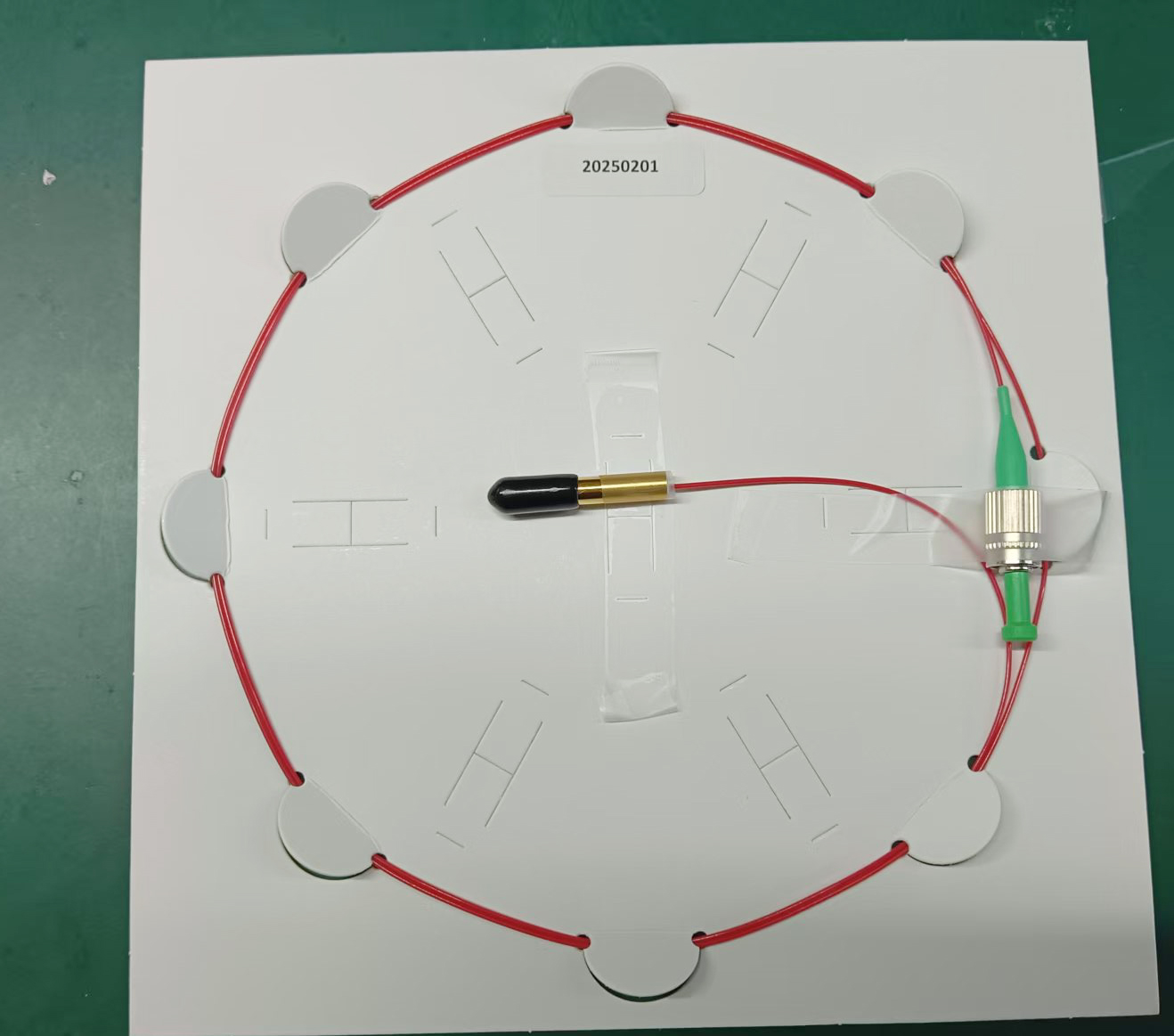635nm Polarization-Maintaining Fiber Collimator: Technical Principles and Applications
Polarization-maintaining fiber collimators play a crucial role in modern precision optical and photonics systems. Specifically optimized for the 635nm wavelength, these collimators have found widespread application in numerous high-tech fields due to their unique performance. This article will provide an in-depth analysis of their technical principles and explore their key applications.
I. Technical Principle
A 635nm polarization-maintaining fiber collimator is a precision optical component that converts a laser beam of a specific wavelength transmitted through a polarization-maintaining fiber into a high-quality, low-divergence parallel beam while maintaining its linear polarization state. Its operating principle can be understood from two core aspects:
1. Polarization-Maintaining Fiber
Polarization-Maintaining Mechanism: The circular symmetry of ordinary single-mode optical fibers can easily cause random changes in the polarization state of the transmitted light due to external stress, bending, and other factors. However, polarization-maintaining fibers, by introducing an asymmetric stress region near the fiber core (such as a “panda” or “bow-tie” structure), produce a strong birefringence effect within the fiber.
“Slow Axis” and “Fast Axis”: This birefringence effect creates two orthogonal polarization axes with different propagation constants—the slow axis and the fast axis. When the polarization direction of the incident light is precisely aligned with one of these axes (usually the slow axis), its polarization state is stably maintained during long-distance transmission.

635nm Wavelength Optimization: Fiber parameters such as the cutoff wavelength and mode field diameter are closely related to the operating wavelength. Polarization-maintaining fibers designed specifically for 635nm have a precisely calculated and manufactured structure to ensure single-mode transmission and optimal polarization maintenance at this wavelength.
2. Collimator
Beam Transformation: The core of a collimator is one or more precision lenses (usually gradient-index lenses or spherical lenses). Its function is to transform the divergent Gaussian beam emitted from the fiber end into a nearly parallel beam with a larger cross-section and minimal divergence angle through refraction or diffraction.
Key Parameters:
Working Distance: The distance range over which the beam maintains excellent collimation.
Beam Diameter: The size of the collimated spot. Divergence angle: A key indicator of beam parallelism; the smaller the angle, the better the collimation.
635nm Anti-Reflection Coating: The lens surface is coated with an anti-reflection coating specifically formulated for the 635nm wavelength. This significantly reduces Fresnel reflections at the end facet, improving optical transmittance and preventing reflections from interfering with light sources (such as lasers).
3. Precision Alignment and Packaging
Precisely aligning the slow axis of the polarization-maintaining fiber with the optical axis of the collimating lens is the most challenging step in the entire manufacturing process. Specialized alignment techniques and robust packaging technologies (such as laser welding or adhesive curing) ensure that the device can maintain stable output of collimated light with a fixed polarization direction despite harsh environments such as vibration and temperature fluctuations.
II. Application Areas
The 635nm wavelength lies within the red visible light band, to which the human eye is extremely sensitive. This characteristic gives it an irreplaceable advantage in applications requiring human vision, positioning, or interaction.
1. Fiber Optic Sensing Systems
Interferometric sensors: These include fiber optic gyroscopes, hydrophones, and current transformers. These sensors are based on the principle of optical interference and are extremely sensitive to the polarization state of the input light. Using a 635nm polarization-maintaining collimator provides reference or signal light with highly consistent polarization states for both arms of the interferometer. Furthermore, 635nm visible light facilitates system optical path alignment and debugging, significantly improving the sensor’s accuracy and stability.
2. Biomedicine and Life Sciences
Confocal Microscopy/Fluorescence Microscopy: 635nm lasers are often used as excitation sources to excite specific fluorescent dyes or proteins. Polarization-maintaining collimators provide pure, linearly polarized excitation light. Combined with polarization detection technology, this can reveal information about sample anisotropy, enabling studies of cell membrane structure, muscle fibers, and other structures.
Flow cytometry: In cell analysis, cells are illuminated with 635nm polarized light. By analyzing the polarization properties of the scattered light, cell size, shape, and internal complexity can be distinguished.
Optical Coherence Tomography: In some OCT systems, the 635nm wavelength band can be used for superficial vascular imaging or as a guide light source.
3. Quantum Information Technology
Quantum Communication and Computing: In many quantum optical experiments, the polarization state of photons is a crucial carrier for encoding quantum information (qubits). 635nm polarization-maintaining collimators can precisely prepare, manipulate, and transmit single photons or entangled photon pairs with specific polarization states, making them key components in quantum key distribution and optical quantum computing experimental platforms.
4. Testing and Metrology
Optical System Debugging and Calibration: 635nm red visible light beams are ideal for debugging free-space optical paths. Engineers can use them to visually trace optical paths, align optical components, and measure the flatness of optical tables.
Polarization-Dependent Testing: As a stable light source with a known polarization state, they are used to test parameters such as polarization-dependent loss and extinction ratio of other optical components (such as wave plates and polarization beam splitters).
5. Industrial Processing and Display Technology
Precision Positioning and Alignment: In laser processing and lithography, 635nm collimated beams are often used as indicator or positioning beams to mark machining paths or assist in workpiece alignment. LiDAR and Holography: Certain structured light projection and holographic display systems require high-quality polarized collimated light as an information carrier.
Conclusion
The 635nm polarization-maintaining fiber collimator is a culmination of optical design and precision manufacturing. It cleverly combines the polarization-maintaining capabilities of polarization-maintaining fiber with the beam-transforming capabilities of a collimating lens. Its core technology lies in its deep optimization of the 635nm wavelength and precise control of the polarization axis. These characteristics make it an indispensable component in a wide range of fields, from basic scientific research to industrial applications, particularly in scenarios requiring visible polarized light. With the continuous advancement of photonics technology, its importance is expected to grow.

Comments are closed